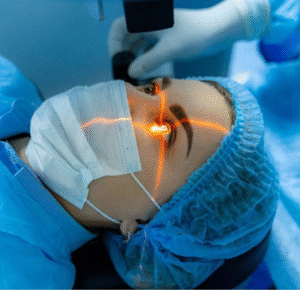
Nanomedicine, the application of nanotechnology in the field of medicine, has emerged as a transformative force in healthcare. By manipulating materials at the nanoscale—typically between 1 and 100 nanometers—researchers and clinicians are developing innovative solutions that enhance diagnostics, drug delivery, and treatment methodologies. But the pressing question remains: is nanomedicine being used today? This article explores the current applications of nanomedicine, highlighting its significance in various medical fields and examining its impact on patient care.
Understanding Nanomedicine
What is Nanomedicine?
Nanomedicine refers to the use of nanotechnology to prevent, diagnose, and treat diseases. By leveraging the unique properties of nanoparticles, nanomedicine allows for targeted drug delivery, improved imaging techniques, and the development of novel therapeutic agents. This approach has the potential to enhance the efficacy of treatments while minimizing side effects.
Key Features of Nanomedicine
- Targeted Delivery: Nanoparticles can be engineered to deliver drugs directly to specific cells or tissues, improving therapeutic outcomes.
- Enhanced Imaging: Nanoparticles can serve as contrast agents in imaging techniques, facilitating early diagnosis of diseases.
- Multifunctionality: Nanomedicine can combine various therapeutic and diagnostic functions within a single platform.
Current Applications of Nanomedicine
1. Cancer Treatment
One of the most promising applications of nanomedicine is in oncology. Traditional cancer treatments, such as chemotherapy and radiation, often have significant side effects due to their impact on healthy tissues. Nanomedicine offers several advantages in this area:
a. Targeted Drug Delivery
Nanoparticles can be designed to target cancer cells specifically. For instance, liposomes—spherical vesicles made of lipid bilayers—can encapsulate chemotherapy drugs and deliver them directly to tumor sites, reducing the exposure of healthy cells. This targeted approach enhances the therapeutic effect while minimizing side effects.
b. Combination Therapies
Nanoparticles can carry multiple therapeutic agents simultaneously, allowing for combination therapies that target different pathways involved in cancer progression. For example, a single nanoparticle can deliver both a chemotherapy drug and an immunotherapy agent, potentially improving treatment outcomes.
c. Imaging and Monitoring
Nanomedicine also plays a crucial role in cancer imaging. Nanoparticles can serve as contrast agents in techniques such as magnetic resonance imaging (MRI) and computed tomography (CT). By improving the visibility of tumors, these imaging agents facilitate earlier detection and more accurate monitoring of treatment responses.
2. Cardiovascular Disease
Nanomedicine is making strides in the prevention and treatment of cardiovascular diseases, which remain a leading cause of morbidity and mortality worldwide.
a. Targeted Drug Delivery for Atherosclerosis
Nanoparticles can be used to deliver therapeutic agents directly to atherosclerotic plaques, helping to stabilize or reduce plaque formation. This targeted approach may lead to more effective treatment strategies for conditions such as coronary artery disease.
b. Biosensors for Early Detection
Nanotechnology has enabled the development of biosensors capable of detecting biomarkers associated with cardiovascular diseases. These nanosensors can provide rapid and sensitive detection of conditions such as heart attacks or strokes, allowing for timely intervention.
3. Neurological Disorders
Nanomedicine has significant potential in treating neurological disorders, including Alzheimer’s disease, Parkinson’s disease, and multiple sclerosis.
a. Blood-Brain Barrier Penetration
One of the challenges in treating neurological disorders is the blood-brain barrier (BBB), a protective barrier that prevents many therapeutic agents from reaching the brain. Nanoparticles can be engineered to cross the BBB, delivering drugs directly to affected areas. This capability may improve the treatment of conditions like Alzheimer’s and Parkinson’s.
b. Targeted Delivery of Therapeutics
Nanomedicine allows for the targeted delivery of neuroprotective agents or anti-inflammatory drugs to specific brain regions, enhancing the efficacy of treatments for various neurological conditions.
4. Infectious Diseases
The rise of antibiotic resistance and emerging infectious diseases have underscored the need for innovative solutions. Nanomedicine offers several strategies to combat these challenges.
a. Antimicrobial Nanoparticles
Nanoparticles, such as silver and copper nanoparticles, exhibit potent antimicrobial properties. They can be incorporated into medical devices, wound dressings, and topical formulations to prevent infections and promote wound healing.
b. Vaccine Development
Nanotechnology is also being utilized in the development of vaccines. Nanoparticles can serve as carriers for antigens, enhancing immune responses and providing adjuvant effects. This approach has been particularly relevant in the rapid development of COVID-19 vaccines.
5. Regenerative Medicine
Nanomedicine is playing a vital role in regenerative medicine, particularly in tissue engineering and stem cell therapy.
a. Nanofibers for Tissue Engineering
Nanofibers can be used to create scaffolds that mimic the extracellular matrix, providing a supportive environment for cell growth and tissue regeneration. These scaffolds can be engineered to deliver growth factors or stem cells, enhancing the repair of damaged tissues.
b. Targeted Delivery in Stem Cell Therapy
Nanoparticles can facilitate the targeted delivery of therapeutic agents to stem cells, improving their effectiveness in tissue repair and regeneration.
Challenges and Limitations
Despite the promise of nanomedicine, several challenges and limitations must be addressed:
1. Safety and Toxicity
The safety of nanoparticles is a significant concern, as their small size may lead to unexpected interactions with biological systems. Comprehensive studies are needed to assess the long-term effects and potential toxicity of nanomedicine applications.
2. Regulatory Hurdles
The regulatory landscape for nanomedicine is still evolving. Establishing clear guidelines for the development, testing, and approval of nanomedicine products is essential to ensure their safe and effective use in clinical practice.
3. Public Perception
Public perception of nanotechnology and nanomedicine can influence its acceptance and adoption. Educating the public about the benefits and risks of nanomedicine is crucial for fostering trust and understanding.
Future Directions in Nanomedicine
1. Personalized Medicine
The future of nanomedicine lies in its potential for personalized medicine. By tailoring treatments to individual patients based on their unique genetic and molecular profiles, nanomedicine can enhance therapeutic efficacy and minimize adverse effects.
2. Advanced Imaging Techniques
Future advancements in imaging technologies that incorporate nanomedicine may lead to improved early detection and monitoring of diseases. Enhanced imaging capabilities will facilitate the identification of diseases at earlier stages, allowing for more effective interventions.
3. Integration with Artificial Intelligence
The integration of nanomedicine with artificial intelligence (AI) may revolutionize diagnostics and treatment planning. AI algorithms can analyze large datasets to identify patterns and predict responses to nanomedicine-based therapies, leading to more precise and effective treatment strategies.
Conclusion
In conclusion, is nanomedicine being used today? The answer is a resounding yes. Nanomedicine is making significant strides across various medical fields, from oncology and cardiovascular disease to infectious diseases and regenerative medicine. The ability to deliver drugs more effectively, enhance diagnostics, and develop innovative therapies is transforming patient care and improving health outcomes.
While challenges remain, ongoing research and development in nanomedicine hold immense promise for the future of healthcare. As we continue to explore the applications of nanotechnology in medicine, it is clear that nanomedicine is not just a concept of the future; it is a reality that is reshaping the landscape of modern medicine today.


